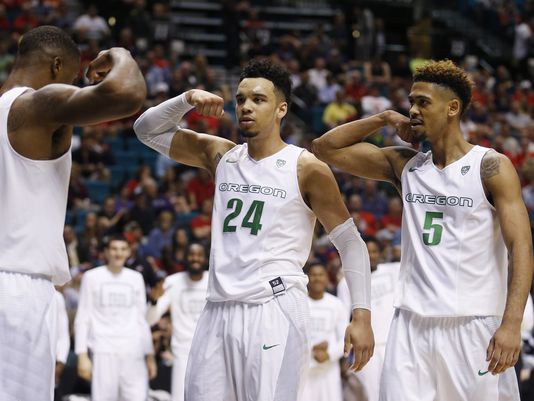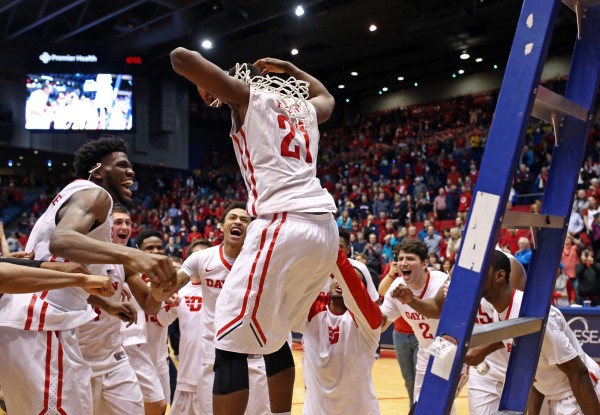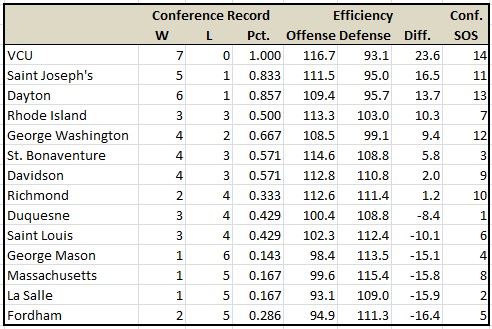Rushed Reactions: #1 Oregon 69, #8 Saint Joseph’s 64
Posted by Kenny Ocker on March 20th, 2016Rush the Court will be providing wall-to-wall coverage of each of the NCAA Tournament from each of the 13 sites this year. Follow our NCAA Tourney specific Twitter accounts at @RTCEastregion, @RTCMWregion,@RTCSouthregion and @RTCWestregion. Kenny Ocker is at the Spokane pods of the South and West regionals this week.
Three Key Takeaways.

It wasn’t easy, but top-seeded Oregon is advancing to the Sweet Sixteen (Photo: Kyle Terada-USA TODAY Sports)
- Oregon saved the Pac-12 for another few days: The conference took a beating. Every other team lost in the first weekend of the NCAA Tournament, some in painful fashion, some in blowouts, some in both – Utah. But with a pair of clutch three-pointers from Tyler Dorsey and Dillon Brooks, the Ducks kept their title run alive and made their second Sweet Sixteen in three years with the late win Friday. Crisply run zone-busting offense generated the wide-open shots, and great shooting and execution finished them.
- Turnovers did in Saint Joseph’s: Hawks coach Phil Martelli told his players before the game they would win going away if they had fewer than 10 turnovers. They had 12, eight in the first half, but the two late in the second half crushed them. Papa Ndow turned down a wide-open three-pointer as the shot clock expired, passing to a teammate and committing a 30-second violation. Then, with just seconds left, DeAndre’ Bembry lost his dribble and turned the ball over at the top of the three-point line. Without those two turnovers, the Hawks’ NCAA Tournament hopes might not die.
- Have fun with Duke, Ducks: Here you go, one seed, you’ve made the Sweet Sixteen. And now you get to face a coach who has made 23 of them. Oregon wasn’t flustered tonight, despite going down seven late in the second half at 58-51. They made big stops, they made big shots, and it resulted in a big comeback on a big stage. It will be interesting to see how Duke’s offense, heavily reliant on the outside shooting of Brandon Ingram and Grayson Allen, interacts with Oregon’s defense, which relies on the elite interior defense of Chris Boucher and Jordan Bell. Duke lacks elite shot-blocking, which means a jump-shot-happy Oregon team should be able to succeed if it decides to go inside. Read the rest of this entry »


















































